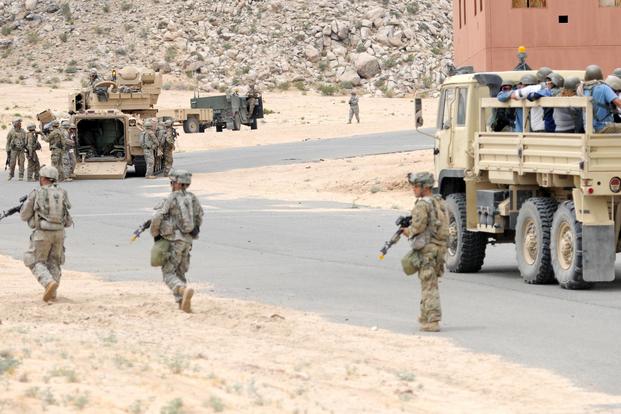The director of the Army National Guard outlined a new strategy Wednesday that will mean more training days and an increased possibility of short-notice deployments for Guard soldiers.
As part of National Guard 4.0, the Guard has begun a transformation aimed at better meeting the needs of the operational Army, Lt. Gen. Timothy Kadavy told an audience at an Association of the United States Army Institute of Land Warfare Breakfast.
The new strategy will mean Guard soldiers may not always be notified about upcoming mobilizations months or even years in advance, Kadavy said.
"Maybe you are not going to get a notification of sourcing two years ahead of time," he said, describing the process of how the Guard notifies soldiers that their unit might be needed for a deployment.
"If you are at contingency plans, that notification of sourcing might be you are mobilized tomorrow, move to your home station; four days later, we want you at the mob station," he continued. "It's a very short deployment timeline, and you've got to meet a combatant commander's timeline."
This is the fourth transformation of the National Guard since the adoption of the all-volunteer force in the early 1970s, Kadavy said. With guidance from Army Chief of Staff Gen. Mark Milley, this effort is designed to bring the Guard up to a higher level of readiness so it can be more responsive to contingencies in the future.
"As part of the Army's operational force, we are decreasing mobilization times in order to meet the needs of the time ... as well as potential contingencies," he said. "With a smaller Army, our country needs a more prompt response from our citizen soldiers."
The National Guard makes up about 39 percent of the Army combat force. That's eight of the Army's 18 divisions or 27 of the Army's 58 brigade combat teams, Kadavy said.
Currently, about 20,200 Guard soldiers are mobilized for missions around the world.
"We project approximately 25,000 mobilizations in fiscal year 2018 alone," Kadavy said.
He added, "We are mobilizing large contingents of Army National Guard soldiers for United States Army missions around the world."
Later this year, Tennessee's 278th Armored Brigade Combat Team will deploy a battalion task force to Poland to participate in NATO's enhanced forward posture mission, Kadavy said. Nine months later, another battalion task force from the 278th will take its place.
To prepare units for the increased operational tempo, "some of our soldiers are being asked to train more than the traditional 39 days per year," Kadavy said.
This is not the first time Guard members have exceeded the traditional number of training days, he said.
In fiscal 2000, the average was 49 training days. In 2008, Guard soldiers trained an average of 85 days per year, per soldier, Kadavy said. And between 2011 and 2015, the average was nearly 67 training days per year, he said.
Kadavy did not say whether the Guard has decided on a specific number of increased training days, but said combat training center rotations have been doubled this year.
The Guard will have two rotations this year at the National Training Center at Fort Irwin, California, and two rotations at the Joint Readiness Training Center at Fort Polk, Louisiana, which will mean high-intensity combat training for nearly 30,000 Guard soldiers, he said.
In addition, "we have also placed our armored brigade combat teams and Stryker brigade combat teams on four-year training and readiness cycles to provide the Army the capacity and capability that it needs," Kadavy said. "Our soldiers need to be healthy, physically and mentally fit, qualified on their weapons and prepared to deploy on short notice."
He did acknowledge that there are risks to placing too many demands on the part-time force, which has employment and family obligations to maintain.
"We have to be aware of all these challenges that our soldiers face," Kadavy said. "We have to keep asking our troops how they are doing."
Leaders, Kadavy said, have to be mindful that troops face a breaking point related to the number of days they commit to the Guard "when not mobilized and deployed."
"We do not want to strain those relationships that they have with their families and with their employers," he said.
-- Matthew Cox can be reached at matthew.cox@military.com.













